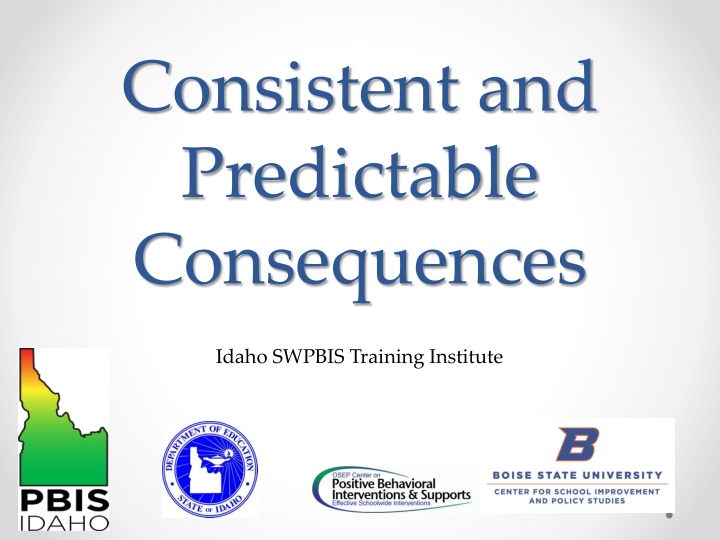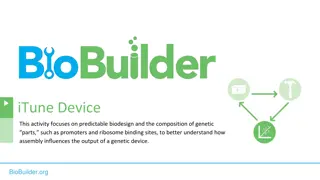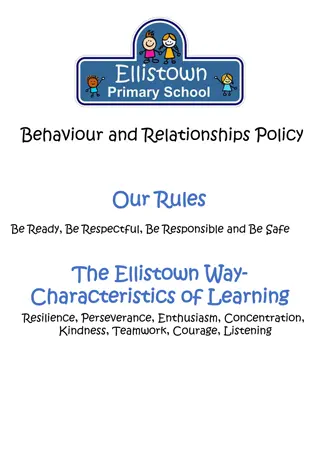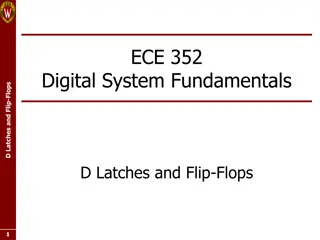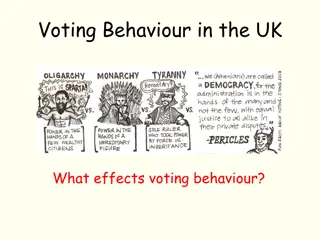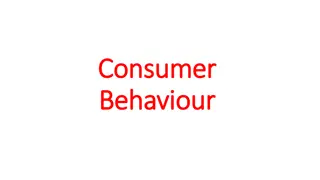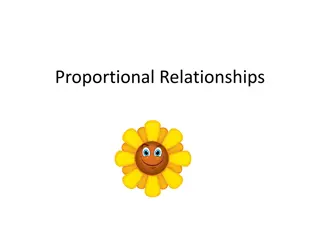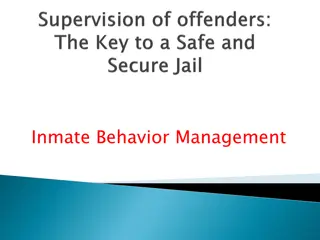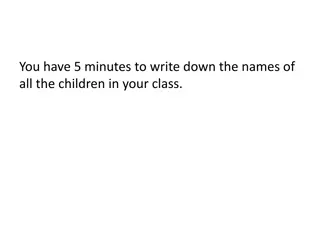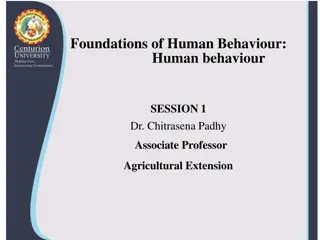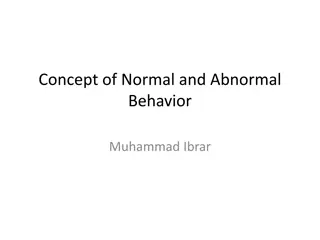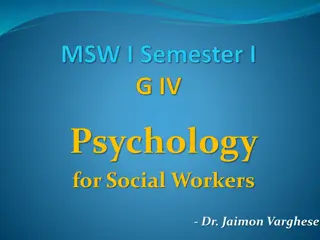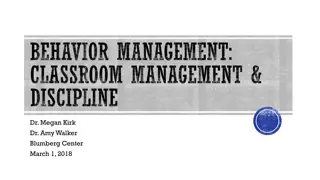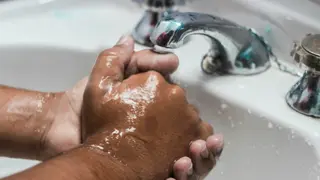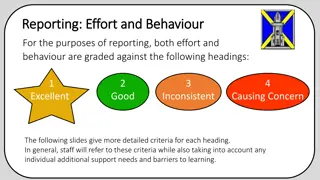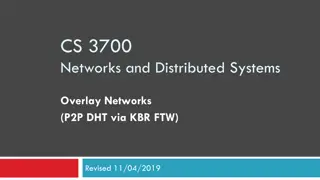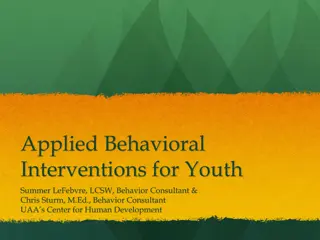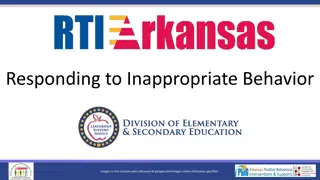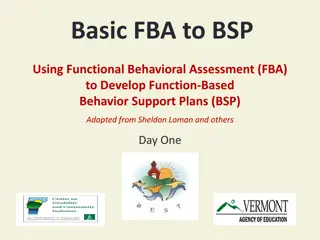Implementing Consistent and Predictable Consequences in Behavior Management
Explore strategies such as reinforcement, punishment, proactive techniques like priming and pre-correction, and the use of consistent consequences to manage behaviors effectively in educational settings. Understand how to proactively encourage desired behaviors, address infractions, and pre-correct chronic errors. Learn the importance of consistency and predictability in shaping behavior and fostering a positive learning environment.
Download Presentation

Please find below an Image/Link to download the presentation.
The content on the website is provided AS IS for your information and personal use only. It may not be sold, licensed, or shared on other websites without obtaining consent from the author.If you encounter any issues during the download, it is possible that the publisher has removed the file from their server.
You are allowed to download the files provided on this website for personal or commercial use, subject to the condition that they are used lawfully. All files are the property of their respective owners.
The content on the website is provided AS IS for your information and personal use only. It may not be sold, licensed, or shared on other websites without obtaining consent from the author.
E N D
Presentation Transcript
Consistent and Predictable Consequences Idaho SWPBIS Training Institute
Responding to Infractions & Error Correction
Reinforcement & Punishment Punishment: Decreases the likelihood of behavior o Positive punishment o Negative punishment
Question I praised Mrs. Jones in front of the rest of the staff for the work she did as part of the social committee. Then all of the sudden, Mrs. Jones stops coming to committee meetings. Has my praise reinforced or punished her work?
Proactive Strategies Use strategies for encouraging expected behavior Attend to students who display expected behavior Prime and pre-correct for desired behavior during times problem behavior is likely Redirect when early problem indicators occur
Priming & Pre-correction Priming: Providing for successful completion or skill, or engagement in an activity (giving a piece of the puzzle, answer to the problem, etc.) Pre-correcting: Prompting or reminding students what is expected for a given activity, time frame, or location (verbal reminders, posters, hand signals)
Pre-correction: Set them up for success Review how expectations relate to upcoming activity Types of pre-correction: o Verbal reminders o Behavioral rehearsals o Demonstrations of rule-following or socially appropriate behaviors Delivery: o Presented in or before settings where problem behavior is likely o Build into classroom routines
Use Pre-correct for Chronic Errors Pre-correct/prompt for desired behavior in problem context o Go to problem setting/situation o Get attention of students o Give reminder or opportunity to practice skills o Watch child for demonstration of skill o Acknowledge demonstration Provide positive feedback
Responding to Problem Behavior Be Proactive First: Use strategies for reminding, encouraging expected behavior Pre-Correct: Reviewing expectations prior to starting an activity Example: Remember to be Safe, Responsible, & Respectful in the hallway. We walk in a single file line down the right side of the hall with zipped lips, and hands and feet to self.
Pre-Correction Checklist & Plan 1. Context Students entering classroom immediately after recess 2. Predictable Behavior Enter shouting, laughing, and pushing before complying with teacher direction 3. Expected Behavior Enter room quietly, go to desks, begin task, keep hands to self 4. Context modification Teacher meets students at door, has them wait to go to desk to begin entry tasks 5. Pre-Correction Teacher reminds students before recess of expected entrance behaviors and reward. Asks students to tell what expected behaviors are 6. Strong Reinforcement All students quiet and working within 1 min. 5/5 days they will have 5 extra minutes of Friday recess 7. Prompts Teacher gives signal at the door to be quiet and points to activity on chalkboard. 8. Monitoring Plan Teacher uses a watch to measure how long it takes for all students to get on task and counts how many students begin their tasks immediately (within 10 seconds)
Responding to Problem behavior Direction/request & Wait Time (5-10 seconds) If, Challenging Behavior Desired behavior Redirect: Prompt to expectation (fit to activity) Reinforce!!!! Specific Praise Acknowledgement system Walk away & Wait 5-10 sec. If, Desired Behavior If, Challenging Behavior Reinforce (light) Acknowledge Specific praise Preplanned Consequence
Redirection Redirections should be Immediate & brief Specific Hands and feet to self vs. stop that Phrased in classroom vocabulary Joey, please use walking feet Joey, Jenny Stack & Rack please. Prompt to desired behaviors Whoa, remember what we practiced, can you show me what we ve been practicing? I m pretty sure I heard the correct answer, but I couldn t tell because there was no hand raise. Who has a quiet hand raise? Respectful Can you show me engaged? vs. You need to listen.
Low Level Challenging Behavior Teacher Routine Direction/request & Wait Time (5-10 seconds) If, Challenging Behavior Desired behavior Redirect: Prompt to expectation (fit to activity) Reinforce!!!! Specific Praise Acknowledgement system Walk away & Wait 5-10 sec. If, Desired Behavior If, Challenging Behavior Reinforce (light) Acknowledge Specific praise Preplanned Consequence
A comparison of Two Approaches to Discipline Coercion Using threats and punishment to eliminate problem behavior Instruction Teaching alternative positive behavior
Why is the approach typically used? Coercion Instruction To stop the behavior annoying the adult by issuing penalties, making threats, or inflicting pain (physical, mental, or emotional) To correct problems by teaching appropriate skills that help the child develop maturity, civility, and self- discipline
What is the focus of the teachers or parents? Coercion Instruction Skills for success in school and life a long- term perspective The past or immediate problem behavior a short-term perspective
What is the emotional context in which the method is used? Coercion The adult is often angry, hostile, frustrated, physically tense, and stressed Instruction The adult is calm and relaxed, with feelings of care and concern for the individual s success and well-being
What are the potential results or side effects experienced by the student? Coercion Thoughts or feelings of fear, guilt, stupidity, inferiority, lack of confidence, anger, hostility, and contempt Instruction Thoughts or feelings of confidence, value, self- worth, and trust in others, with a desire to reciprocate the acts of kindness, care, and concern
Consistent & Predictable Consequences Give rationale for the rules and consequences State the consequences when you first teach students the rules Post rules and consequences and explain and review regularly (works well in pre-correction) Follow through consistently (vs. threats)
Make your response predictable for you and the student both! Make consequences system dependent instead of teacher dependent o Helps keep you and the student from escalating o Makes responding more efficient (lowest possible disruption to flow of instruction) Decide what the consequence for broken rules will be in advance
Match the intensity of the consequence to the intensity of the behavior Hierarchy for rule violations o Within classroom (minor, classroom-managed behaviors) o Schoolwide (majors; office-managed behaviors) Consequences delivered efficiently o Consistent o Timely (quickly) o Tie back to expectations and/or desired behavior
Leveled Consequences Define your responses for both desired and inappropriate behaviors in advance, post them, and respond CONSISTENTLY o Specific and leveled consequences for inappropriate behavior that match the intensity of the behavior Level Behavior Consequence 1 Out of seat, talk out = loss of point 2 Repeated small offenses = student makes action plan at recess Swearing = lunch detention 3 Fighting, vandalism = office referral
Consequences Decide in advance what your consequences will be. Teach them first and be sure to follow through. Match the intensity of your consequence matches the intensity of the behavior. Be systematic in administering your consequences to minimize the disruption to the flow of your instruction
Creating a Schoolwide System of Consistent & Predictable Consequences
Major Purpose of Schoolwide System Improve instruction power of consequences Consistent implementation across settings and staff Discourage students displaying challenging behavior Predictable effect of poor choices
Basic System Requirements Organization Consensus Training o Student & Staff Materials
Organization Adults need to clearly know Procedures: When to administer specific consequences How to administer within a teaching context When to intensify consequence How to document infractions Materials: Referral forms Training materials
Organization Create a framework to make it clear how adults apply the system Eg: create a one to one relationship between the severity of behaviors and an array of consequences (level 1 behaviors = level 1 consequences)
Pyramid to Success for All Office Issues Bus referrals, Truancy, Chronic offender, Threatening student or adult, Fighting, Refusal to go to or Disruptive in Buddy Room, Sexual harassment, Weapons, Drug/cigarettes/ tobacco/alcohol, Assault physical or verbal Teacher Method for handling student behaviors Referral Form send student to office with completed form Process with student before re-entry Office Method for handling student behaviors Proactive: RRKS Review, Parent Contact Corrective: Loss of Privilege, Saturday detention, Opportunity Center, Suspension, etc. Team Issues Repeated minor & major disruptions in multiple classrooms, Throwing things, Hallway/Lockers problems, Attendance, Repeated disrespect to peers or adults, Cheating, Inappropriate to substitute, Insubordination, Chronic Disruptions Method for handling student behaviors Proactive: Parent contact (mandatory), RRKS review, Team conference, Team conference with student, Team conference with Parents, Team conference with Administrator/Counselor, Triage in the AM with the student, Triage at lunch with the student, Team Focus, etc. Corrective:Removal of privilege on team, Recovery Study Hall, Buddy Room, etc. Classroom Teacher Issues Out of seat, Talking to classmates, Talking out, Off-task, Violation of class rules, Inappropriate language, Lack of materials, Gum, Disrespect, Cheating, Tardies, Minor destruction of property Method for handling student behaviors Proactive: Positive call to parents, Use praise, Use Rewards, Daily/Weekly Goal sheets, Proximity to instructor, Provide choices, One-to-One assistance, Pre-correct for transitions/trouble situations, Regular breaks for exercise, Give a job, RRKS Review, Reward lunch with teacher, etc. Corrective: One and only one REDIRECT, RRKS Review, Safe-seat, Buddy Room, Think Sheet, Parent Phone call, Lunch Detention, Recovery Study Hall, Removal of privilege in classroom, etc.
Level I Behaviors Definition Examples Procedure Behaviors that: Not following directions Talking and engaging in off task behaviors Play that is a violation of the behaviors outlined in the matrix Minor safety violation Using inappropriate language (an isolated incident) Making noises that disrupt the learning environment or violate the matrix Talking in the hall 1. Inform student of rule violated 2. Describe expected behavior 3. Contact parent if necessary 4. Debrief and reteach schoolwide behavioral expectation DO NOT require administrator involvement or DO NOT significantly violate the rights of others or DO NOT appear chronic
Level I Behaviors Have we pre-taught to the expectation? Have I acknowledged the correct behavior? Have I re-taught the behavior? If so, then I may apply the following: Warning slip. I may also apply any of the following consequences or other appropriate consequence. Possible Consequences: Verbal correction Reflection Form Time Out Apology Loss of Privileges Loss of Recess Communication with Teacher
Level II Behaviors Definition Examples Procedure Behaviors that: Arguing with teacher/talking back Throwing inappropriate object Talking out on a regular basis Not following directions on a regular basis Continued use of inappropriate language 1. Inform student of rule violated 2. Describe expected behavior 3. Compare ODR form 4. Contact parent 5. Submit ODR form to office Significantly violate the rights of others or Put others at risk or harm or Are chronic Level 1 behaviors
Level II Behaviors Possible Consequences: Verbal Correction Reflection Form Time Out Apology Loss of Privileges Loss of Recess Behavior Contract After School Detention
Level III Behaviors Definition Examples Procedure Purposefully hitting others Throwing inappropriate objects at others Self-inflicting wounds Spitting or biting Making verbal or written racial, ethnic, religious, violent, or sexual slurs Possessing a weapon or a look-alike weapon Sexually inappropriate behaviors Bullying Profanity (real or implied) Fighting Vandalism Theft 1. Informs student of rule violated Describe expected behavior Complete ODR form If necessary: 4. Send student to office with ODR form and attach any relevant documentation forms if possible or Incident may require immediate removal from class to office. Call office to alert; follow up with a written description of the event on an ODR form. 5. Parent contact coordinated between teacher and principal. Behaviors that: 2. 3. Violate school policies or Violate state policies or laws or Are chronic Level II behaviors or Require administrator involvement Reference Definition of Behaviors
Level III Behaviors Possible Consequences: Verbal Correction Reflection Form Time Out Apology Loss of Privileges Loss of Recess After School Detention Suspension from School Parent Escort at School/Events Restitution Parent Contact
Team Activity 1. Brainstorm common examples of student misbehavior 2. Organize behaviors into levels 3. Assign a set of consequences to each level of behaviors
Documenting Challenging Behavior Documentation of challenging behavior indicates a student s response to basic supports. o Used to document a pattern of student behavior o Office Discipline Referral (ODR) Students are commonly sent to office WITHOUT documentation.
ODR EffectiveODRs are Fast and easy to fill out (a minute or less) Support system of consequences Support consistent use of consequence system by adults Creates clear and easily summarized data
ODRs should no longer be viewed as a consequence. They are only data (same as an AIMSWEB probe)
Consensus Faculty and staff should be provided the opportunity to inform design and procedures. Do this as a whole school staff process.
Following an ODR Effective Administrator Response
